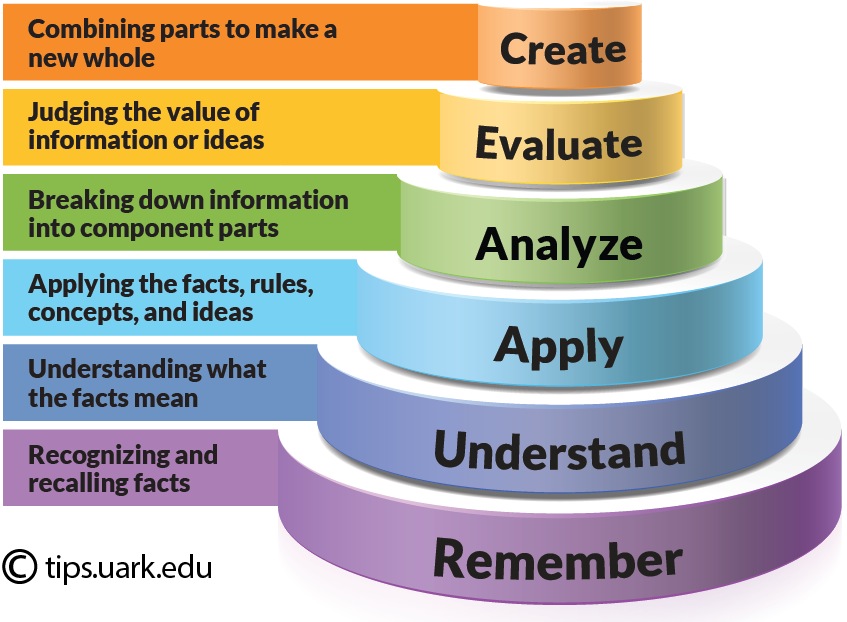The framework elaborated by Bloom and his collaborators consisted of six major categories: Knowledge, Comprehension, Application, Analysis, Synthesis, and Evaluation. The categories after Knowledge were presented as “skills and abilities,” with the understanding that knowledge was the necessary precondition for putting these skills and abilities into practice.
The Original Taxonomy (1956)
Here are the authors’ brief explanations of these main categories in from the appendix of Taxonomy of Educational Objectives (Handbook One, pp. 201-207):Knowledge
“involves the recall of specifics and universals, the recall of methods and processes, or the recall of a pattern, structure, or setting.”Comprehension
“refers to a type of understanding or apprehension such that the individual knows what is being communicated and can make use of the material or idea being communicated without necessarily relating it to other material or seeing its fullest implications.”Application
refers to the “use of abstractions in particular and concrete situations.”Analysis
represents the “breakdown of a communication into its constituent elements or parts such that the relative hierarchy of ideas is made clear and/or the relations between ideas expressed are made explicit.”Synthesis
involves the “putting together of elements and parts so as to form a whole.”Evaluation
engenders “judgments about the value of material and methods for given purposes.”
The Revised Taxonomy (2001)
A group of cognitive psychologists, curriculum theorists and instructional researchers, and testing and assessment specialists published in 2001 a revision of Bloom’s Taxonomy with the title A Taxonomy for Teaching, Learning, and Assessment. This title draws attention away from the somewhat static notion of “educational objectives” (in Bloom’s original title) and points to a more dynamic conception of classification.
Why To Use Bloom’s Taxonomy?
The authors of the revised taxonomy suggest a multi-layered answer to this question, to which the author of this teaching guide has added some clarifying points:
* Objectives (learning goals) are important to establish in a pedagogical interchange so that teachers and students alike understand the purpose of that interchange.
* Teachers can benefit from using frameworks to organize objectives because
* Organizing objectives helps to clarify objectives for themselves and for students.
* Having an organized set of objectives helps teachers to:
1. “plan and deliver appropriate instruction”;
2 .“design valid assessment tasks and strategies”;and
3. “ensure that instruction and assessment are aligned with the objectives.”

No hay comentarios:
Publicar un comentario